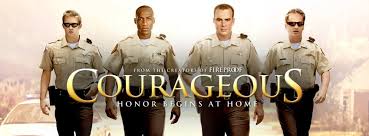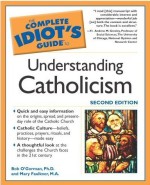The Complete Idiot's Guide To Catholicism explores the world's largest religious denomination and introduced you to the Catholic practice. It offers you a new approach to learning Catholicism, covering the rituals and symbols of the religion, such as Mass, the Seven Sacraments, and the holy days and their meaning. The authors tell you how Catholicism has spread throughout the world, its roots, and how it has grown and changed over the course of this century. It's a valuable tool for anyone interested in examining--or reexamining--this large and complex religion. --This text refers to the Paperback edition.
Product Description:
In the past several months negative reviews of The Complete Idiot’s Guide to Understanding Catholicism have begun collecting on Amazon.com. They seem to emanate from the same neo-conservative position that would like to roll back the reforms of the Catholic Church made at Vatican II. Since these reviews are in such sharp contrast to the heart-warming reports received during the first three years of the book, and since some are simply incorrect, I would like to take the opportunity, as one of the authors to respond.
Most of these critics have asserted that the book does not represent Catholic teaching. I want to assure the reader that each and every teaching in the text and in the glossary of terms is correlated with the latest version of the Catholic catechism. Some have questioned the absence of the Catholic imprimatur, which is the Latin word meaning "let it be printed," and is a bishop’s seal of approval reserved for official Catholic teaching. To have the imprimatur used for books published by a secular press and intended for the general audience, is not necessary or appropriate.
The publishers of the Idiot’s Guide series insist on hiring an expert in the particular field who is paid to read the book and edit it from his or her authoritative knowledge. Our book was reviewed by a priest who holds the Doctor of Jurisprudence, Master of Church Administration, and Licentiate in Sacred Theology degrees. He has served as Vicar General and presently serves as General Counsel and Censor Librorum for the Roman Catholic Diocese of Nashville. Censor Librorum is the office of the theologian a bishop appoints to read and advise him on which Catholic books to grant his imprimatur. We acknowledge him in the front pages of the book. Both authors have their credential as qualified teachers in religious education. I hold a Ph.D. from the University of Notre Dame and am full professor of Pastoral Studies at Loyola, Chicago’s Jesuit University. Additionally, I have a mandatum from the Cardinal Archbishop of the Roman Catholic Archdiocese of Chicago to teach Catholic Theology. The mandatum is an acknowledgment by Church authority that a Catholic professor of a theological discipline is a teacher within the full communion of the Catholic Church.
We have received numerous letters from Cardinals, bishops and priests praising the book, especially for making the Catholic Church so accessible. We have received no letters of disapproval from church authorities. Our stated purpose isn’t to present a theological study of the church, but to portray the experience of being Catholic. In taking this approach, we openly discuss the struggles as well as the joys. The viewpoint we present cannot be portrayed by clergy—whose life and formation has not only focused them on the institutional aspect of the Church, but has also separated them in a particular restricted class of the church that makes up less than 1% of church members. It is the cumulative identity of this Church that is the focus.
We spotlight this religion historically, theologically, philosophically, symbolically, sociologically, doctrinally, and institutionally. We assess its significance for the third millennium. This book presents Catholicism as a two thousand year old faith that is anything but monolithic and certainly not perfect. It is the ongoing story of how Jesus as the Christ walks with the people. This story is as diverse and complex as the people who live it. There are differences of opinion within the hierarchy of the church, different interpretations of cannon law, and different theologies—often conflicting with one another. To present Catholicism as a simple matter of law and prescribed church practices it isn’t what we set out to do—that would miss a complete understanding of Catholicism. Our point is that the continued presence of Christ on earth exists in the ever developing lives of this people! There are thousands of books the reader can consult on matters of church law and doctrine—few that talk about what it is like to dynamically live the religion.
One writer complained about the section title: "Abortion, It’s a tough choice," saying that for Catholics there is no choice. This section clearly and unequivocally lays out the Catholic Church’s present teaching on abortion. The church is against it. At the same time, the church teaches that without choice there can be no morality. The individual is obliged to think about his or her action and freely make a choice according to conscience. So yes, for many Catholics, abortion is a tough choice—it presents a moral struggle.
In 1966 the U.S. Catholic Bishops declared: "No one is free to evade his (sic) personal responsibility by leaving it entirely to others to make moral judgments." Yet many people in the church continue to seek the security of law rather than accept the responsibility that comes with freedom—the onerous task of wrestling with moral dilemma—to seek perfection is to fall short of the mark many times in a lifetime.
To read the viewpoint of the clergy, there is now a popular book in another series by two priests that gives it to you. Many of our critics have recommended it. However, to understand the complexities of Catholicism, as our title suggests, this is the book. We are Catholic authors who in our twenties, beginning our families and adult life were shaped by the foundation of Vatican II. Having spent our childhood and adolescent years in the pre-Vatican II Catholic Church, we are well aware of what radical changes were recovered in Vatican II – social justice, ecumenism, an embrace of the signs of the times, and the dignity and value of the informed individual conscience. Reader, be aware there are organized forces who speak against the spirit of reformation of Vatican II.
Robert T. O’Gorman
Professor of Pastoral Studies
Loyola University Chicago
Co-author of The Complete Idiot’s Guide to Understanding Catholicism
- View other titles by Bob O'Gorman / Mary Faulkner
- Send us your review of Complete Idiot's Guide to Understanding Catholicism (Second Edition)
ISBN: 9781592570850
Catalogue code: N/A
Publisher: ALPHA - published 15/08/2003
Format: Paperback

